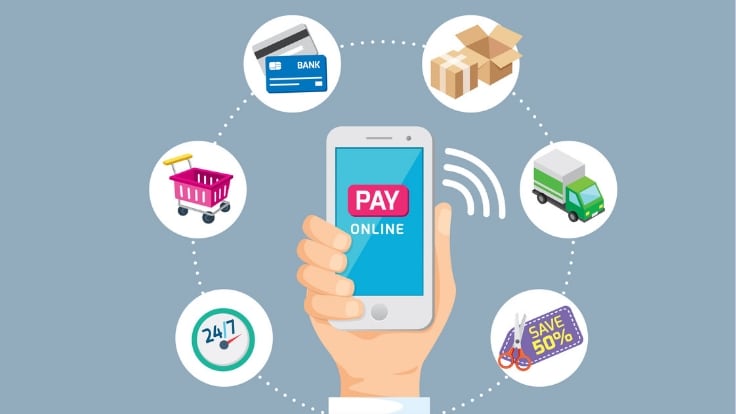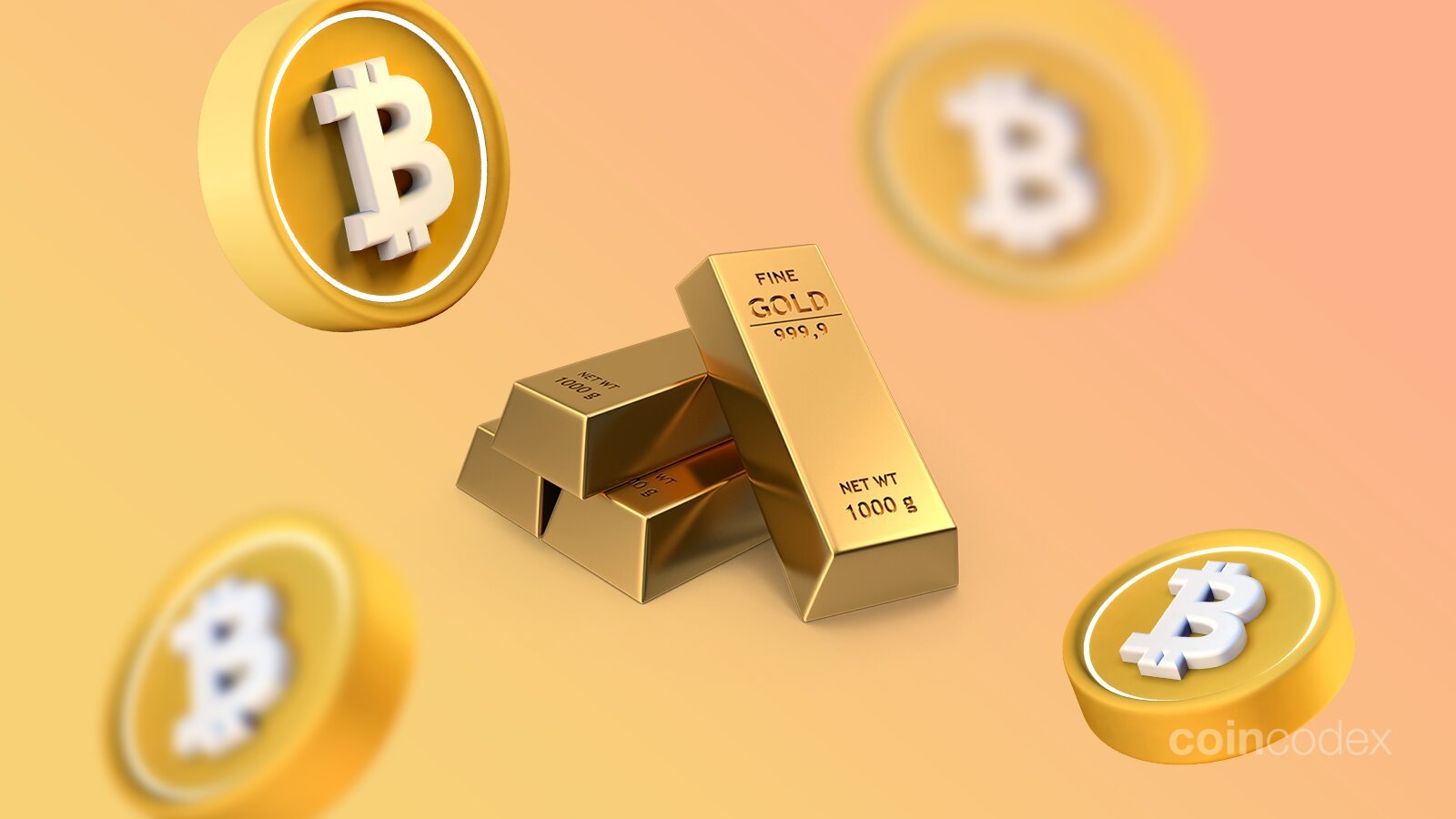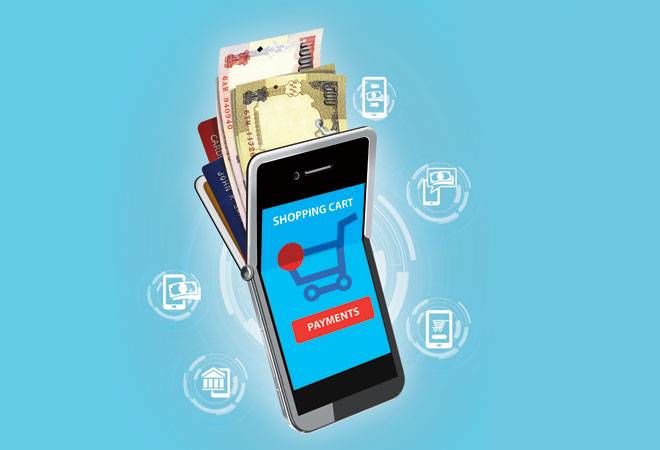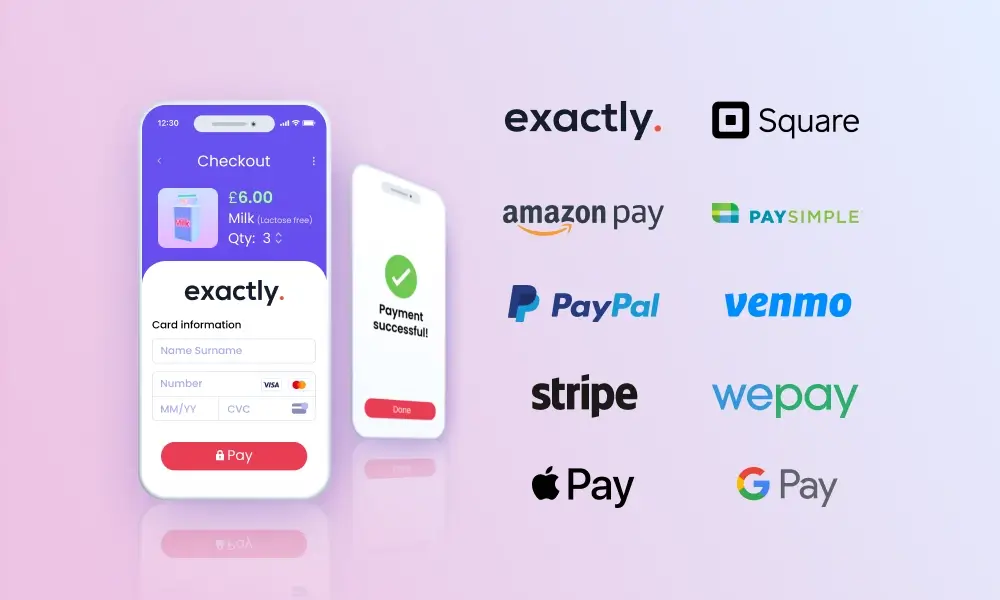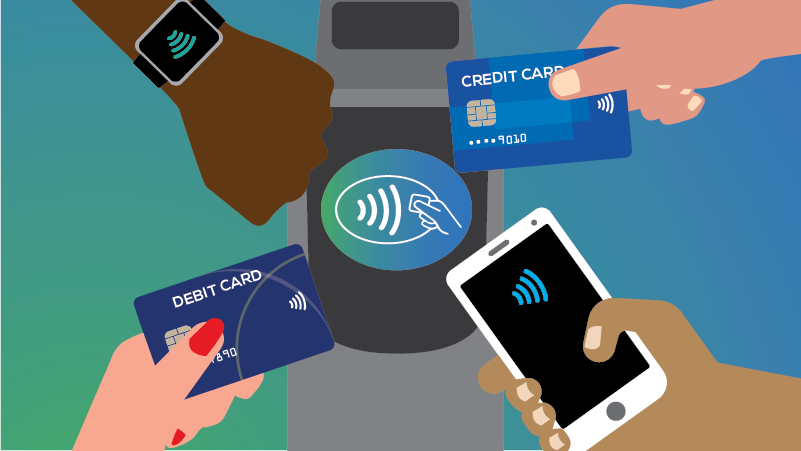Digital Payment Showdown: Which Platform Triumphs for Your Transactions?
In the clash of clicks and swipes, your choice in the digital payment platforms comparison can make or break your e-commerce success. As we dive into the digital payment landscape, we dissect the frontrunners, putting PayPal against Stripe and Venmo toe to toe with Cash App. Is your email alone enough to send money now? We’ll find out. With a tap, we leap into mobile wallets, asking if they really outshine online systems. And when it comes to your coin, should it be crypto?
We decode the rise of digital currency in everyday deals. Security isn’t just a buzzword here; it’s your business lifeline. We untangle the web of data encryption and NFC tech that keeps your transactions safe. Finally, we guide merchants through the digital maze to snatch up the payment system that slips into their setup like a glove. Ready, set, go – let’s unlock the transaction treasure trove and spot the champion that’ll land you in the winner’s circle of digital payments.
Understanding the Digital Payment Landscape
Exploring Various Electronic Payment Methods
Today’s shopping world loves speed and comfort. We buy with just taps on our phones. A cup of coffee or a new book, digital payment options make it a breeze. Options like cards, online banking, mobile apps, and more, offer us this ease. They’re fast and use tech to keep our cash safe. Let’s dive in and see what makes them tick.
Cards are still king for many folks. A quick swipe or a dip, and you’re all set. But now, cards are going digital too. Apps hold our card details and let us tap to pay. This is contactless tech. It means no more fumbling for your wallet.
Then, we’ve got mobile wallets. Think of them like virtual pockets. Popular ones are Apple Pay and Google Pay. You store card info in them and pay through your phone. Comparing mobile wallets is like picking your favorite ice cream. Each has its own flavor. Some might blend in cool features. Others brag about top-notch security.
Now, online payment systems are not to be missed. They rule when we shop online. PayPal, for instance, lets you buy and sell across the web. It’s like having a digital checkbook. Online systems like PayPal fight fraud and protect your pocket.
The Rise of Cryptocurrency Payments in Digital Transactions
Cryptocurrencies are the new kids on the block. They’re shaking up how we think about money. They use something called blockchain for safety. Crypto payments can be faster than banks. And they work across the world. No need for different currencies.
But crypto can be up one day, down the next. This makes some shoppers and shops wary. If stable, they could be great for buying across borders.
Crypto isn’t everywhere yet, but it’s growing. People are curious and using it more. Shops are starting to accept it too. Digital wallets now often hold crypto along with regular cash.
The most fun part? No coins or notes. Just digital numbers moving around. It’s clean, and there’s less stuff to carry. But always remember, no matter how you pay, make sure it’s safe and right for you.
Digital payments are not just about tapping and going. They’re about making buying easy and safe. Whether you like your payments mobile, online, or crypto-fied, there’s something for everyone. Now it’s time to pick what fits your wallet, and your life, the best.
Mobile Wallets and Online Payment Systems Face-Off
PayPal vs. Stripe: Choosing the Right Service for Your Needs
When picking between PayPal and Stripe, think about what you need most. Do you want easy setup or more control? PayPal is great for getting started quick. With a PayPal account, you sell right away online. Stripe, though, needs more tech work. But it lets you shape the customer’s checkout experience on your site.
Both PayPal and Stripe keep your money moves safe. They check each payment for any odd signs. This way, they fight fraud before it hits. Also, they encrypt all the card info they get. So, your details stay out of harm’s way.
Comparing fees, PayPal might cost more per swipe. Yet, Stripe can have extra fees for things like refunds. Think about how often you’ll need these services. This will help you choose.
For customer support, PayPal is a big name. So, some might find comfort there. Stripe, though, offers detailed help for tech issues. That can be a win if you’re tech-savvy.
Venmo versus Cash App: Comparing Peer-to-Peer Payment Systems
Peer-to-peer apps let you send cash to pals fast. Venmo is big for splitting bills with friends or paying rent. It’s easy and most young folks use it. You just find a friend in the app and send them money. Cash App works the same but has a bonus. You can buy stocks or even Bitcoin with it.
Security is key in these apps. Both use protection steps to keep your cash safe. They check any strange activity and alert you. So, if something seems off, they let you know right away.
Venmo has a social side, showing your payment notes to friends. Yet, you can turn this off if you want more privacy. Cash App keeps things private from the start.
What about fees? For quick cash-outs, Venmo and Cash App charge a small fee. Yet, they’re free if you’re not in a rush. Sending money is mostly free on both. But, if you use a credit card, they’ll tack on a fee.
Cash App lets you do more things in one app. Besides sending money, you can invest. With Venmo, it’s just about payments.
In Venmo versus Cash App, think about what you’ll use it for. Are you going split the cost of pizza or trying to invest a bit? This will decide which app works best for you. Each one has strong points, depending on your needs.
Enhancing Transaction Security and Efficiency
Navigating Digital Wallet Security and NFC Payment Technology
When it comes to digital payments, safety is as crucial as speed. Think about your money floating in space. You’d want it locked tight, right? Digital wallets make this possible. They keep your cash safe, sort of like a superhero for your money. Now let’s talk NFC payment tech. It’s like a magic wand for your phone. Tap – and poof – payment is done!
NFC stands for Near Field Communication. It’s a fancy way of saying that two devices can talk to each other when they’re close. No swiping, no chips, just tap your phone near a reader, and your payment goes through quickly and safely.
Now, let’s pit two favorites against each other – Apple Pay and Google Pay. Apple Pay works only on Apple gadgets, while Google Pay is for Android users. They both keep your card details a secret when you pay. This protects you from sneaky thieves after your info. Both are pretty fast, but are they the best? That depends on your device and where you like to shop.
The Impact of Financial Data Encryption on Secure Digital Transactions
You know how spies send secret messages in movies? Financial data encryption is like that but for your digital payments. It scrambles your sensitive information. Only someone with the right code can read it. So, when you buy those cool sneakers online, encryption helps keep your card details safe from hackers.
Different online payment systems use this trick, but some are better at it than others. PayPal, for example, is like a digital fortress. It has a strong wall that guards your info. Online shopping? Sending cash to a pal? PayPal has your back. Stripe is another heavy lifter in the encryption world. It works great for businesses and their customers.
Want more good news? Most electronic payment methods take security seriously. They guard your cash like it’s their own. With all this tech, paying for stuff online is safer than it’s ever been.
There you have it. That’s how your digital dollars stay safe and zoom through transactions like lightning. Remember, the best digital payment options have strong shields and are super-fast. Whether you’re selling crafts or buying pizza, keep these tips in your pocket. Stay safe and swift, friends!
The Merchant’s Guide to Adopting Digital Payments
Analyzing E-Commerce Payment Solutions and Gateway Reviews
When you sell online, you need a way to get paid. Easy, right? But with so many options, it gets tough. Let’s dive deep into the world of e-commerce payment solutions. The aim here is to keep things simple while shedding light on the crucial stuff. I know what it’s like to be on the lookout for that perfect payment gateway. It needs to be like a loyal dog, always there for you, without biting a chunk off your profits.
First off, online payment systems vary a lot. But fret not. There are some gems out there like PayPal and Stripe. Each has its unique flair. PayPal’s been around since dinosaurs roamed the internet, not really, but you get the joke. It’s like that old trustworthy friend. Stripe, on the flip side, is the cool new kid, always coming up with fresh ways to make online cash moves shine.
When it comes down to it, picking between them is like choosing your favorite ice cream. They both taste good, but it’s about your taste buds, er, I mean, your business needs. Think about transaction fees, how quick you get your cash, and how they keep your money safe.
Comparing The Ease of Integration and Fees for Square Versus PayPal
Now, onto the famous Square versus PayPal showdown. You’ve likely heard of these two. They’re like the heavyweight champs of digital payment options. Both bring their A-game to the table, especially when it’s time to pay up without the pain.
Square is the go-to for folks who do a mix of online and in-person sales. It loves a good point-of-sale system and doesn’t mind if you’re selling crafts or coffee. PayPal, with its vast user base, is a beast online. It’s got the muscle to push your business into the view of millions of buyers.
One big thing every merchant sweats over is the money. No, not making it, but giving it away in fees. Every swiped card, every online sale, they all nibble at your profits. Both Square and PayPal want their slice of the pie. But don’t pull your hair out yet. We’re talking small percentages per transaction, plus a little flat fee. The deal is to suss out which one’s fee schedule smiles at your business plan.
And, my friends, integration is a breeze. Got a website already? They’ll cozy up with it like they’ve been there forever. You’ll be zipping out digital invoices and accepting cards before you can even say “Show me the money!”
The journey to the best payment partner is no magic carpet ride, but it’s way easier with a little know-how. Electronic payment methods, digital wallets, all that jazz, they’re tools in your belt. Pull the right one out, and you’re golden. But remember, friends, the scoop I’m giving you is to light that path. Your steps, your business, and your choice – they’re all yours to make. Keep your head in the game, and before you know it, you’re the one on top of this digital high-stakes duel.
We’ve covered a lot in this post about digital payments. From exploring e-pay systems to the rise of crypto, we see how varied this field is. Payment tech is moving fast, with options like PayPal and Stripe making online shopping easy. For sending cash to friends, Venom and Cash App are top picks, but they work quite differently.
Security is huge when we talk about money online. We learned how wallet security and data encryption are key to keep our cash safe. Lastly, if you run a business, knowing about payment gateways like Square and PayPal is crucial. These can change how your shop works and what it costs you.
So, what’s the big takeaway? Digital payments are here to stay. They’re getting smarter and more secure. Whether you’re buying, selling, or just sharing expenses, there’s a digital payment method out there for you. Keep the info from this guide in mind, and you’ll find dealing with money online can be simple and safe. Let’s embrace the tech and make the most of our digital dollars.
Q&A :
What are the differences between the top digital payment platforms available?
When comparing digital payment platforms, consider factors like transaction fees, security features, ease of use, compatibility with different currencies and countries, withdrawal options, and customer support. Some platforms may offer lower fees but fewer features, while others might be more user-friendly with higher costs.
How do I choose the best digital payment platform for my needs?
Selecting the best digital payment platform depends on your specific requirements. Assess whether you prioritize quick transfers, low fees, high security, or acceptance by a wide range of merchants. Research and compare platforms based on these criteria and look for reviews from current users to make an informed decision.
Are there any new digital payment platforms emerging as competitors to established ones?
The digital payment landscape is continuously evolving with new entrants aiming to challenge established platforms. These new competitors may offer innovative features, such as improved user experiences, better rewards, lower fees, or higher security standards. Keep an eye on fintech news and forums to stay updated on emerging platforms.
Can I use multiple digital payment platforms, and are there benefits to doing so?
Yes, you can use multiple digital payment platforms. This can be beneficial for diversifying your options, taking advantage of different platform strengths, and having backup options in case of outages or issues with a primary platform. However, managing multiple accounts may increase complexity, so weigh the benefits against the potential hassle.
What security measures should I consider when using digital payment platforms?
Security is a top concern when using digital payment platforms. Key measures to consider include two-factor authentication, encryption of financial data, fraud detection systems, and user privacy protections. Additionally, check if the platform is compliant with regulatory standards like PCI DSS and what type of insurance or protection they offer for your funds.
